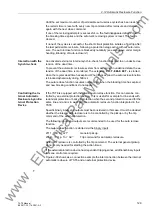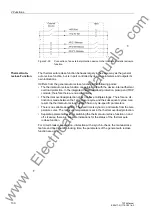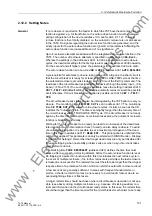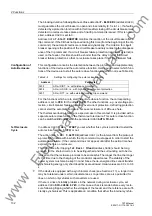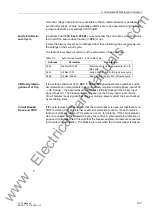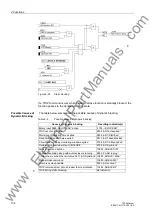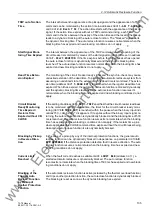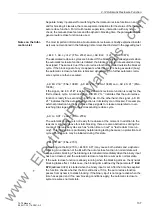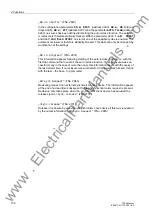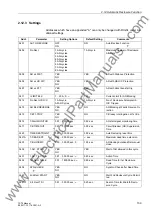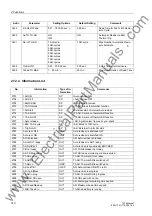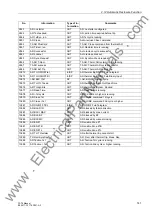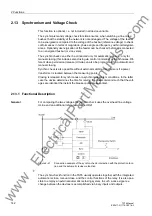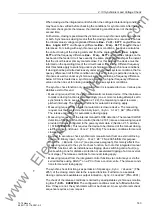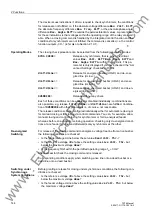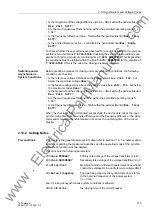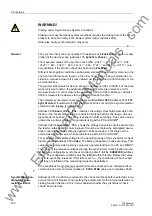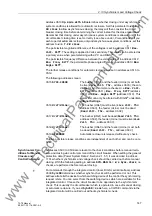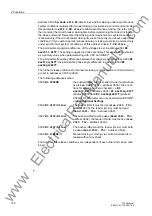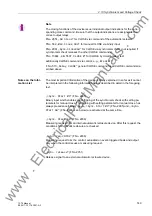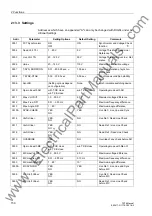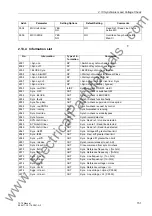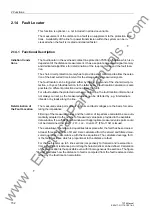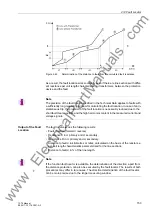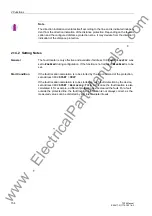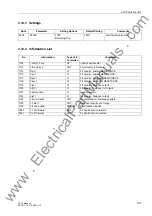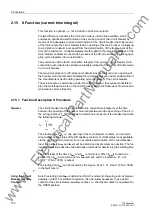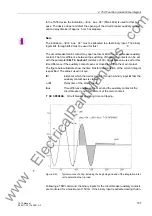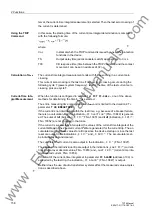
2.13 Synchronism and Voltage Check
143
7ST6 Manual
E50417-G1176-C251-A3
When closing via the integrated control function, the configured interlocking conditions
may have to be verified before checking the conditions for synchronism. After the syn-
chronism check grants the release, the interlocking conditions are not checked a
second time.
Furthermore, closing is possible with synchronous or asynchronous system conditions
or both. Synchronous closing means that the closing command is issued as soon as
the critical values (voltage magnitude difference
Max. Volt. Diff
, angle difference
Max. Angle Diff
, and frequency difference
Max. Freq. Diff
) lie within the set
tolerances. For closing with asynchronous system conditions, the device calculates
the correct timing of the closing command from the angle difference
Max. Angle
Diff
and the frequency difference
Max. Freq. Diff
such that the voltages on the
busbar and the feeder circuit have exactly the same phase relationship at the instant
that the circuit breaker primary contacts close. For this purpose the device must be
informed on the operating time of the circuit breaker for closing. Different frequency
limit thresholds apply to switching under synchronism and asynchronous conditions:
If closing shall be permitted exclusively under synchronous system conditions, the fre-
quency difference limit for this condition can be set. If closing is permitted under syn-
chronous as well as under asynchronous system conditions, a frequency difference
below 0.01Hz is treated as a synchronous condition, a higher frequency difference
value can then be set for closing under asynchronous system conditions.
The synchro check function only operates when it is requested to do so. Various pos-
sibilities exist to this end:
• Measuring request from the external automatic reclosure device. If the internal au-
tomatic reclosing function is set accordingly (one or more reclosing attempts set to
synchronism check, see also Section 2.12.2), the measuring request is accom-
plished internally. The release conditions for automatic reclosing apply.
• Measuring request from an internal automatic reclosure device. The measuring
request must be injected via the binary input
„>Sync. Start AR“
(FNo 2906).
The release conditions for automatic reclosing apply.
• Measuring request from the internal manual CLOSE detection. The manual CLOSE
detection of the central function control (Section 2.18.1) issues a measuring request
provided this was configured in the power system data 2 (Section 2.1.5, address
1151
SYN.MAN.CL
). This requires the device to be informed of the manual closing
via binary input
„>Manual Close“
(FNo 356). The release conditions for manual
closing apply.
• Request to execute a check synchronism measurement from an external closing
command. Binary input
„>Sync. Start MC“
FNo. 2905 fulfills this purpose.
Unlike the
„>Manual Close“
(see previous paragraph), this merely affects the
measuring request to the synchro check function, but not other integrated manual
CLOSE function such as instantaneous tripping when switching onto a fault (e.g.
overreaching zone for distance protection or accelerated tripping of a time overcur-
rent stage). The release conditions for manual closing apply.
• Measuring request from the integrated control function via control keys or via the
serial interface using DIGSI
®
on a PC or from a control centre. The release condi-
tions for manual closing apply.
The synchro-check function gives permission for passage
„Sync. release“
(FNo.
2951) of the closing command to the required function. Furthermore a separate
closing command is available as output indication
„Sync.CloseCmd“
(FNo. 2961).
The check of the release conditions is limited by an adjustable synchronous monitor-
ing time
T-SYN. DURATION
. The configured conditions must be fulfilled within this
time. If they are not, the synchronism will not be checked. A new synchronism check
sequence requires a new request.
www
. ElectricalPartManuals
. com

